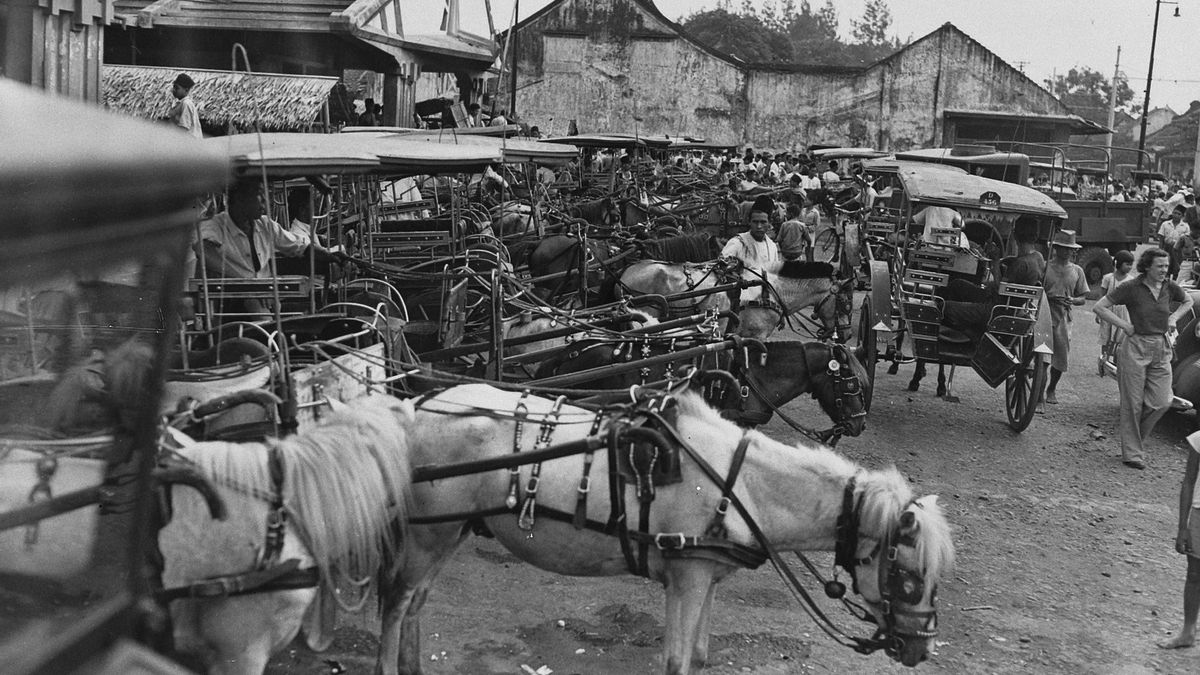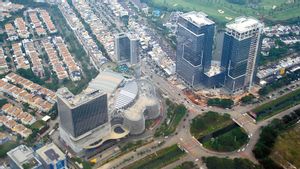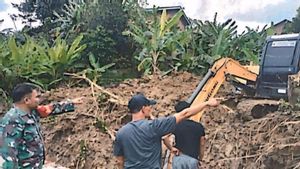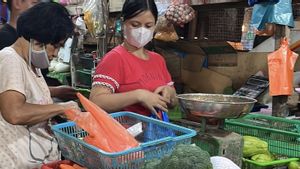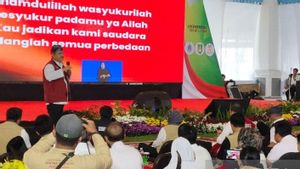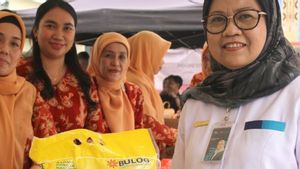JAKARTA - The movement of cash circulation of up to Rp200 billion per day has made Tanah Abang Market the largest textile wholesale center in Southeast Asia. However, money is not the only factor. Tanah Abang which was victorious, which was able to bring in many people from all corners of the archipelago, has in fact been going on since the Dutch colonial period.
The story of Tanah Abang Market begins with the construction of a canal by the Chinese chief, Phoa Bing Ham in 1648. He made this canal by tugging the Ciliwung River. Interestingly, when the canal named Molenvliet was completed, its presence was quite useful to facilitate the transportation of forest products and accelerate the development of the area.
Therefore, a wealthy VOC official named Justinus Vinck was attracted to buy land in Central Batavia from the famous landlord Cornelis Chastelein. After negotiating, Chastelein finally released the land for an agreed price of 39,000 ringgit in 1733.
After owning the land, Vinck's business instincts soon came into play. Therefore, it occurred to him to create two markets: Pasar Senen and Pasar Tanah Abang. Both were built with the permission of the VOC Governor Abraham Patras, who ruled from 1735 to 1737.
Quoted from Alwi Shahab's book, Baghdad Merchants from Betawi (2004), it is explained: Thanks to this work of Phoa Bing Ham, Justinus Vinck built Tanah Abang Market. This high-ranking VOC official owned a large amount of land in Batavia, and at the same time building two markets, Pasar Tanah Abang was inaugurated at the same time as his sister Pasar Senen, August 30, 1735.
Although not as big as it is now, Tanah Abang Market, which only opens on Saturdays, was originally built simply by Vinck. Thatched roofs and walls of bamboo or woven bamboo. Even the buying and selling activities carried out at that time were still limited to selling textiles and groceries.

“In front of this market, there were Chinese-owned shops with Chinese architecture. Meanwhile, many Betawi traders sell goat satay, soup, curry, and nasi uduk. In today's parking lot, there were once famous putu bakers all over Jakarta. Because in Tanah Abang there are many cemeteries, pilgrims often buy flowers that are abundant in front of the market today, ”wrote Alwi Shahab.
Even so, the presence of Tanah Abang Market is quite special. The development of the market played a big role in the development of a small civilization in Tanah Abang Village. By GJ Nawi, author of the book Maen Pukul: Pencak Silat Khas Betawi (2016), it is explained that market development is nothing but to accommodate all the abundance of plantation products in the area. such as from Kebon Kacang, Kebon Melati, Kebon Pala, which has now become the name of the village.
Ups and downs
During the five years of its existence, Tanah Abang Market has constantly faced adversities. One of them was during the attack on the orders of the Governor-General of the VOC Adriaan Valckenier (1731 - 1741) on 8 October 1740 to the region.
The attack was a response to the aggressive behavior of Chinese people in Tanah Abang towards the VOC guard post the day before. Due to this incident people became acquainted with the term "Chinezenmoord", which means "killing of Chinese people". Or what is better known as "geger pacinan."
Iksaka Banu described the recording of a tantrum in his short story Bintang Jatuh (2012). In part of his short story, Iksana wrote about the panic of the Chinese who at that time were afraid because they were being hunted down by the colonial government.
“The Dutch, more than a hundred in number, along with the sailors and native coolies, ran behind the large crowd of Chinese people. No, not running hand in hand. They hunt, like a herd of mountain lions herding herds of bison across the prairie, ”Iksaka wrote.
“In a matter of minutes, on either side of the road, in the gutters, and especially in the river, the bodies were crammed with pale yellow bodies. Shattered, "he added.

The incident also spread to Tanah Abang Market, because that is where many Chinese people trade and live. Inevitably, they became the target of VOC attacks using cannons as the main weapon to repulse the Chinese hordes.
As a result, cannon fire not only damaged a number of buildings in Tanah Abang Market, but several other buildings were destroyed and burned out. "Only five years of existence, the Tenabang Market was hit by a disaster, ravaged and burned down," wrote Abdul Chaer in his book Tenabang Tempo Doeloe (2017).
As a result, this riot paralyzed the Tanah Abang Market for a very long time. How could I not, only in 1801 the market was rebuilt. Even so, until the end of the 19th century, Tanah Abang Market did not have a permanent building, but the lower floors were hardened with mortar foundations.
In the end, the stretch of Tanah Abang Market as a commercial center seems to be getting excited again when Gemeente (Praja City) of Batavia undertakes a permanent overhaul of the market. Because, from that intention, Tanah Abang Market can exist to this day and support the traders who sell in it.

The English, Chinese, Japanese, Arabic, and French versions are automatically generated by the AI. So there may still be inaccuracies in translating, please always see Indonesian as our main language. (system supported by DigitalSiber.id)
